12 project management myths to avoid
Last updated: December 25, 2023 Read in fullscreen view
- 01 Aug 2024
 The Standish Group report 83.9% of IT projects partially or completely fail 150/1772
The Standish Group report 83.9% of IT projects partially or completely fail 150/1772 - 13 Apr 2024
 Lessons on Teamwork and Leadership from Chinese story book "Journey to the West" 41/949
Lessons on Teamwork and Leadership from Chinese story book "Journey to the West" 41/949 - 02 Nov 2021
 What is Terms of Reference (ToR)? 23/1466
What is Terms of Reference (ToR)? 23/1466 - 18 Oct 2020
 How to use the "Knowns" and "Unknowns" technique to manage assumptions 21/989
How to use the "Knowns" and "Unknowns" technique to manage assumptions 21/989 - 01 Oct 2020
 Fail fast, learn faster with Agile methodology 13/973
Fail fast, learn faster with Agile methodology 13/973 - 03 Apr 2022
 Microsoft Solutions Framework (MSF) 12/1157
Microsoft Solutions Framework (MSF) 12/1157 - 12 Oct 2022
 14 Common Reasons Software Projects Fail (And How To Avoid Them) 10/504
14 Common Reasons Software Projects Fail (And How To Avoid Them) 10/504 - 18 Dec 2023
 The Cone of Uncertainty in Scrum & Requirement Definition 8/643
The Cone of Uncertainty in Scrum & Requirement Definition 8/643 - 19 Oct 2021
 Is gold plating good or bad in project management? 7/754
Is gold plating good or bad in project management? 7/754 - 18 Oct 2021
 Key Elements to Ramping Up a Large Team 7/1108
Key Elements to Ramping Up a Large Team 7/1108 - 10 Nov 2022
 Poor Code Indicators and How to Improve Your Code? 7/213
Poor Code Indicators and How to Improve Your Code? 7/213 - 28 Jul 2022
 POC, Prototypes, Pilots and MVP: What Are the Differences? 6/606
POC, Prototypes, Pilots and MVP: What Are the Differences? 6/606 - 06 Feb 2021
 Why fail fast and learn fast? 6/375
Why fail fast and learn fast? 6/375 - 13 Oct 2021
 Outsourcing Software Development: MVP, Proof of Concept (POC) and Prototyping. Which is better? 6/424
Outsourcing Software Development: MVP, Proof of Concept (POC) and Prototyping. Which is better? 6/424 - 01 Mar 2023
 Bug Prioritization - What are the 5 levels of priority? 6/207
Bug Prioritization - What are the 5 levels of priority? 6/207 - 07 Oct 2025
 Case Study: Using the “Messaging House” Framework to Build a Digital Transformation Roadmap 5/45
Case Study: Using the “Messaging House” Framework to Build a Digital Transformation Roadmap 5/45 - 05 Mar 2021
 How do you minimize risks when you outsource software development? 5/317
How do you minimize risks when you outsource software development? 5/317 - 31 Aug 2022
 What are the best practices for software contract negotiations? 5/215
What are the best practices for software contract negotiations? 5/215 - 20 Jul 2022
 Software Myths and Realities 4/797
Software Myths and Realities 4/797 - 12 Dec 2021
 Zero Sum Games Agile vs. Waterfall Project Management Methods 4/374
Zero Sum Games Agile vs. Waterfall Project Management Methods 4/374 - 14 Oct 2021
 Advantages and Disadvantages of Time and Material Contract (T&M) 4/789
Advantages and Disadvantages of Time and Material Contract (T&M) 4/789 - 04 Oct 2022
 Which ERP implementation strategy is right for your business? 4/278
Which ERP implementation strategy is right for your business? 4/278 - 07 Jul 2022
 Managing Project Execution Terms 3/379
Managing Project Execution Terms 3/379 - 01 Dec 2023
 Laws of Project Management 3/249
Laws of Project Management 3/249 - 10 Apr 2024
 The Parking Lot Method: Unlocking a Simple Secret to Supercharge Your Productivity 3/403
The Parking Lot Method: Unlocking a Simple Secret to Supercharge Your Productivity 3/403 - 05 Sep 2023
 The Cold Start Problem: How to Start and Scale Network Effects 3/167
The Cold Start Problem: How to Start and Scale Network Effects 3/167 - 08 Oct 2022
 KPI - The New Leadership 3/557
KPI - The New Leadership 3/557 - 18 Jul 2021
 How To Ramp Up An Offshore Software Development Team Quickly 3/516
How To Ramp Up An Offshore Software Development Team Quickly 3/516 - 31 Oct 2021
 Tips to Fail Fast With Outsourcing 3/375
Tips to Fail Fast With Outsourcing 3/375 - 18 Aug 2022
 What are the consequences of poor requirements with software development projects? 3/242
What are the consequences of poor requirements with software development projects? 3/242 - 15 May 2022
 20 Common Mistakes Made by New or Inexperienced Project Managers 2/247
20 Common Mistakes Made by New or Inexperienced Project Managers 2/247 - 14 Jun 2022
 Example and Excel template of a RACI chart in Software Development 2/707
Example and Excel template of a RACI chart in Software Development 2/707 - 23 Sep 2021
 INFOGRAPHIC: Top 9 Software Outsourcing Mistakes 2/411
INFOGRAPHIC: Top 9 Software Outsourcing Mistakes 2/411 - 17 Feb 2022
 Prioritizing Software Requirements with Kano Analysis 2/280
Prioritizing Software Requirements with Kano Analysis 2/280 - 13 Dec 2020
 Move fast, fail fast, fail-safe 2/292
Move fast, fail fast, fail-safe 2/292 - 28 Dec 2021
 8 types of pricing models in software development outsourcing 2/417
8 types of pricing models in software development outsourcing 2/417 - 28 Oct 2022
 Build Operate Transfer (B.O.T) Model in Software Outsourcing 2/361
Build Operate Transfer (B.O.T) Model in Software Outsourcing 2/361 - 04 Oct 2021
 Product Validation: The Key to Developing the Best Product Possible 2/295
Product Validation: The Key to Developing the Best Product Possible 2/295 - 05 Jun 2023
 Fractional, Part-Time (virtual) or Interim CTO: Who Will Cover Your Business Needs? 2/109
Fractional, Part-Time (virtual) or Interim CTO: Who Will Cover Your Business Needs? 2/109 - 26 Sep 2024
 Successful Project Management Techniques You Need to Look Out For 2/368
Successful Project Management Techniques You Need to Look Out For 2/368 - 01 May 2024
 Warren Buffett’s Golden Rule for Digital Transformation: Avoiding Tech Overload 2/188
Warren Buffett’s Golden Rule for Digital Transformation: Avoiding Tech Overload 2/188 - 24 Nov 2023
 The project management paradox: Achieving MORE by doing LESS 2/193
The project management paradox: Achieving MORE by doing LESS 2/193 - 10 Dec 2023
 Pain points of User Acceptance Testing (UAT) 2/416
Pain points of User Acceptance Testing (UAT) 2/416 - 12 Aug 2022
 What is End-to-end project management? 2/382
What is End-to-end project management? 2/382 - 02 May 2022
 What Is RAID in Project Management? (With Pros and Cons) 2/734
What Is RAID in Project Management? (With Pros and Cons) 2/734 - 26 Dec 2023
 Improving Meeting Effectiveness Through the Six Thinking Hats 1/205
Improving Meeting Effectiveness Through the Six Thinking Hats 1/205 - 05 Jan 2024
 Easy ASANA tips & tricks for you and your team 1/180
Easy ASANA tips & tricks for you and your team 1/180 - 11 Jan 2024
 What are the Benefits and Limitations of Augmented Intelligence? 1/434
What are the Benefits and Limitations of Augmented Intelligence? 1/434 - 12 Aug 2024
 Understanding Google Analytics in Mumbai: A Beginner's Guide 1/84
Understanding Google Analytics in Mumbai: A Beginner's Guide 1/84 - 01 Mar 2024
 10 Project Management Myths 1/120
10 Project Management Myths 1/120 - 27 Jan 2020
 Should a project manager push developers to work more hours due to mistakes of manager schedule setting? 1/412
Should a project manager push developers to work more hours due to mistakes of manager schedule setting? 1/412 - 19 Apr 2021
 7 Most Common Time-Wasters For Software Development 1/525
7 Most Common Time-Wasters For Software Development 1/525 - 22 May 2022
 What are common mistakes that new or inexperienced managers make? 1/243
What are common mistakes that new or inexperienced managers make? 1/243 - 02 Dec 2021
 3 Ways to Avoid Scope Creep in IT Consulting /192
3 Ways to Avoid Scope Creep in IT Consulting /192 - 17 Oct 2021
 Does Fast Tracking increase project cost? /348
Does Fast Tracking increase project cost? /348 - 19 Oct 2021
 Software development life cycles /628
Software development life cycles /628 - 13 Jan 2020
 Quiz: Test your understanding project cost management /568
Quiz: Test your understanding project cost management /568 - 06 Nov 2019
 How to Access Software Project Size? /236
How to Access Software Project Size? /236 - 01 Aug 2022
 Is planning "set it and forget it" or "set it and check it"? /264
Is planning "set it and forget it" or "set it and check it"? /264 - 06 Mar 2024
 [SemRush] What Are LSI Keywords & Why They Don‘t Matter /131
[SemRush] What Are LSI Keywords & Why They Don‘t Matter /131 - 12 Mar 2024
 How do you create FOMO in software prospects? /127
How do you create FOMO in software prospects? /127 - 23 Jun 2024
 Best Practices for Managing Project Escalations /183
Best Practices for Managing Project Escalations /183 - 21 Jun 2024
 Dead Horses and the Escalation of Commitment /123
Dead Horses and the Escalation of Commitment /123 - 02 Jun 2024
 Reviving Ancient Wisdom: The Spiritual Side of Project Management /204
Reviving Ancient Wisdom: The Spiritual Side of Project Management /204 - 14 Mar 2024
 Why should you opt for software localization from a professional agency? /117
Why should you opt for software localization from a professional agency? /117 - 30 Nov 2023
 Project Managers, Focus on Outcomes — Not Deliverables /143
Project Managers, Focus on Outcomes — Not Deliverables /143 - 02 Nov 2022
 Difference between Change Management and Project Management /216
Difference between Change Management and Project Management /216 - 06 Jun 2022
 Change Management at the Project Level /292
Change Management at the Project Level /292 - 09 May 2022
 Build one to throw away vs Second-system effect: What are differences? /297
Build one to throw away vs Second-system effect: What are differences? /297 - 10 May 2022
 Levels of Teamwork /180
Levels of Teamwork /180 - 03 Jan 2023
 Organizing your agile teams? Think about M.A.T (Mastery, Autonomy, Purpose) /333
Organizing your agile teams? Think about M.A.T (Mastery, Autonomy, Purpose) /333
Every industry, profession, and company develops and operates with rules and guidelines. Alongside these, myths emerge, and the project management profession is no different. When projects become plenty, work more hectic, and time is limited, it can become tempting to blindly lean on beliefs and instincts — even ones you may not know to be false.
Here are the 12 most commonly held project management myths. Recognizing these project management misconceptions and working to overcome the challenges they can create is vital in ensuring that projects are planned, executed, and completed based on best practices instead of misconceptions.
1. Changing processes midstream will derail your project
The past year’s events have disrupted the operations of organizations across every industry. As a result, projects have been scuttled and spun up with little notice, and nearly every aspect of how projects are managed has undergone some facet of change.
0 seconds of 30 secondsVolume 0%
Whether it’s a need to adopt new tools or new ways of collaborating, these changes have likely stirred up a significant amount of fear in most people, but changes to practices and operations, even when foisted upon an organization out of temporary need, isn’t always a bad thing, as changes that seem troubling on the surface can also lead to positive outcomes.
Changes in processes and modes of communication can create opportunities that may not have existed in the past, opening doors to new ways of thinking and working. As the saying goes “necessity is the mother of invention.” The key to finding the silver lining in unforeseen change is remaining in a mindset of adaptability and agility. It requires looking beyond problems and rewiring how you think when change throws a wrench into everything you expected.
2. Everything within a project is fixable
Project management professionals are wizards at leading teams in the successful execution of projects, reducing risks, collaborating with stakeholders, resolving conflict, and a host of other things — but they are not magicians. Project managers cannot fix everything, especially when problems have gone unaddressed for too long. It is important for project managers, stakeholders, and sponsors to recognize and accept when it is time to close off a task or initiative, instead of pouring more resources into trying to fix a lost cause. The key to recognizing when something isn’t fixable is early detection and frequent communication, especially when teams are working remotely.
3. Clients always know what they want
It is usually assumed that stakeholders know what they are looking for. More often than not, however, they only understand what they are hoping to achieve, not what exactly is required, how realistic their wish list is, or how various parts of the wish list contradict one another. This especially holds true when unforeseen changes have thrown projects off track, as it has over the past year for countless businesses.
This is where project managers and their teams can help evaluate projects and options, and narrow down the stakeholders’ wish list to help identify new project goals that meet the stakeholders’ strategic goals. Without isolating the impact of changes on the stakeholders’ real intended needs, a project can miss the mark with very little effort.
4. A previous project template is a recipe for future success
Over the past year, changes have been plentiful and have called into question the old way of managing projects. Most teams went from working closely together in an office to working remotely. Communications and resourcing changed, and so did stakeholder needs and expectations — previous project templates were likely no longer relevant.
Going forward, regardless of how well a previous project was planned and executed, applying the same approach, techniques, tools, collaboration style, or methodology to a similar project is no guarantee of success. There are many other internal or external factors that could alter the outcome of a project, such as timing, process, human, technological, cultural, or other differences. What may seem to be a slight change could translate into a significant gap down the road. Each project should be planned and executed separately; yes, some aspects of previous projects can be applied, but with due diligence and only when appropriate.
5. All project managers can execute any project successfully
Although a large percentage of project management professionals (PMPs) have the same training and are required to meet the same educational and experience requirements, they are not all the same. No matter how similar two project management professionals may appear on paper, each individual brings different attributes to the table. Their experiences, vision, leadership and collaboration styles, approaches, project or industry exposure, and lessons learned will shape what they offer and how they approach any given project. Even within one organization or functional group, each project manager should be evaluated for each project to ensure they can meet the specific and changing needs of the project stakeholders.
6. New project managers aren’t as effective as veterans
Every project manager should be assessed based on their education and training, experience, and approach to project management. But experience is no guarantee of success, and lack of experience is no guarantee of failure. Some projects require the experience of a veteran project manager and other projects require a fresh set of eyes that can see the project from a new vantage point.
It can be hard for seasoned project managers, stakeholders, or sponsors to accept that a newer approach from a less experienced project manager may create an opportunity for greater project success at times. The good news is that veteran project managers will always be in high demand during times of uncertainty and complexity; such was the case during the challenges that resulted from COVID-19.
7. Project managers can resolve any conflict
Many project managers excel at conflict resolution, but that doesn’t mean they can resolve every conflict. Project managers often have to approach sponsors to assist in resolving conflicts that involve team members, stakeholders, and/or the project manager herself. In these instances, outside help or mediation will be required. Conflict resolution requires a willingness by all parties to resolve issues, and if all parties are not willing to do so, project managers simply cannot work miracles.
8. Scope changes indicate a project is headed for trouble
Scope changes are a common occurrence for projects and do not necessarily signal trouble or project failure. In fact, depending on the industry, nature of the project, project complexity, or other factors, scope changes can be an expected or necessary event. Concern around scope changes occur when changes are frequent and unexpected, and when the future direction of a project remains uncertain after the scope change.
Most recently, virtually all organizations experienced significant and frequent scope changes as a result of the pandemic. These changes were inevitable and unavoidable but didn’t necessarily spell trouble. Instead, they created a state of pause for companies to re-evaluate all projects and activities.
9. Technology can solve everything
Technology is a great enabler, but it isn’t a cure-all for everything. Your company’s people, processes, and policies have to work alongside the technologies that are implemented. Often times companies can get caught up in new technologies and forget to factor in these other vital elements. The wrong technologies selected in haste can create a nightmare for everyone involved. When considering replacing old legacy systems or bringing in new software, it’s essential to slow things down and ensure all aspects of your organization will work with it effectively and efficiently.
10. The project manager is the top expert on a team
This is a common misconception, sometimes on the part of stakeholders, sponsors, teams, vendors, or project managers themselves. A project manager’s role is to facilitate, guide, and mentor throughout the lifecycle of a project, and leverage the knowledge of subject matter experts (SMEs) from other areas of the company to help execute a project. The need for project managers to work closely with SMEs became all too true throughout the pandemic as project managers and other functional team experts were forced to put their heads together to solve one of the most devastating pandemics.
11. If a project is within budget and on time it will be successful
Believe it or not many projects have been executed within budget and on time and completely missed the mark with deliverables. Although budget, timely delivery, and quality are the cornerstones of project management there are many other considerations. Final deliverables, the manner in which the project was executed, stakeholder satisfaction, team synergy, and many other factors play a role in the success or failure of a project. It’s important to remember that, as internal and external environmental changes crop up, budgets and timelines are important but they may not remain the primary litmus test for success. Ultimately the stakeholder needs can also change throughout a project and they determine whether a project was a success.
12. Projects are done at sign-off
By the time stakeholders have accepted deliverables and signed off, project team members may be inclined to consider a project complete. The truth is, without taking the time to review lessons learned (and there will be lessons learned in any project), a project is not truly complete. Team members may be tempted to think of lessons learned as a repetitive exercise and a waste of time — particularly when they just want to get on with the new project — but this portion of the project is critical in helping teams not to repeat mistakes. All team members should be present during this portion of the project to reduced errors and create more value for future stakeholders.








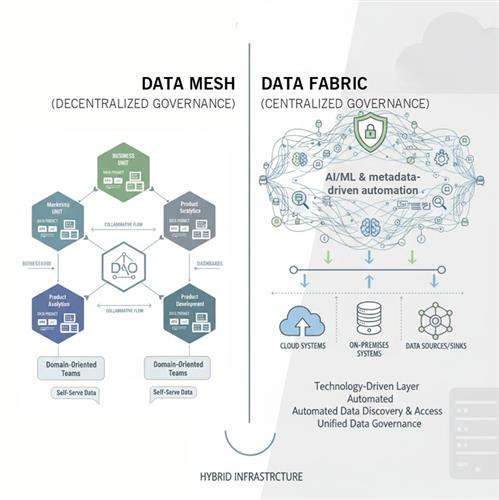
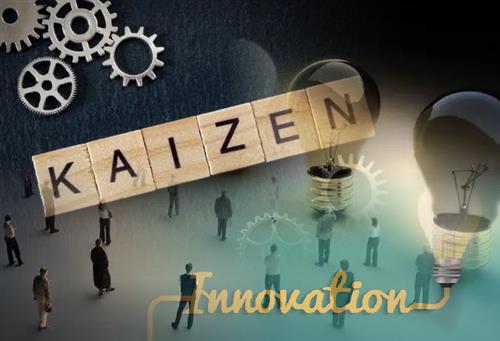

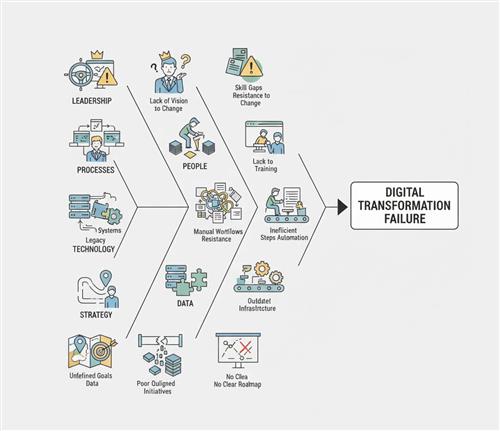





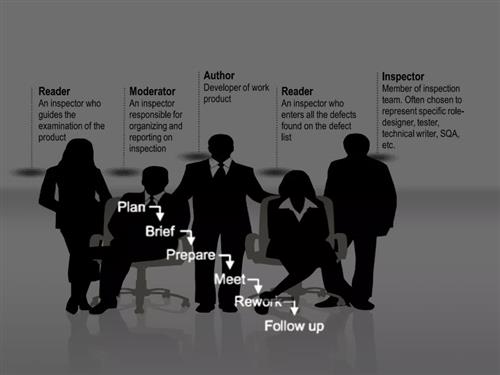



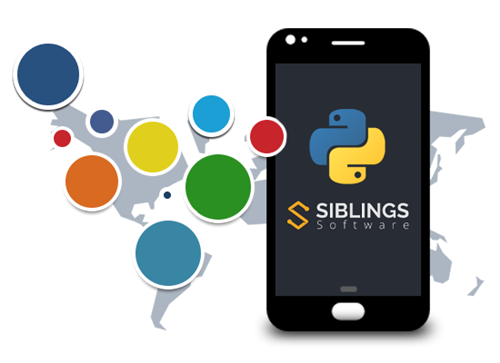
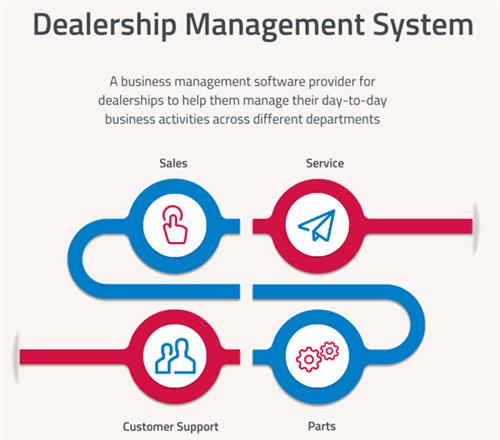


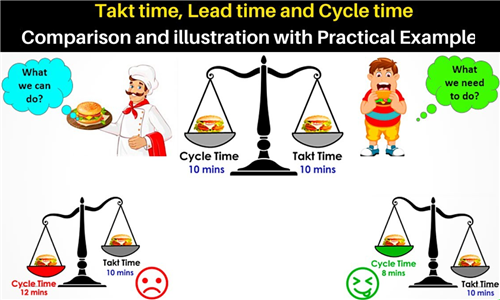









 Link copied!
Link copied!